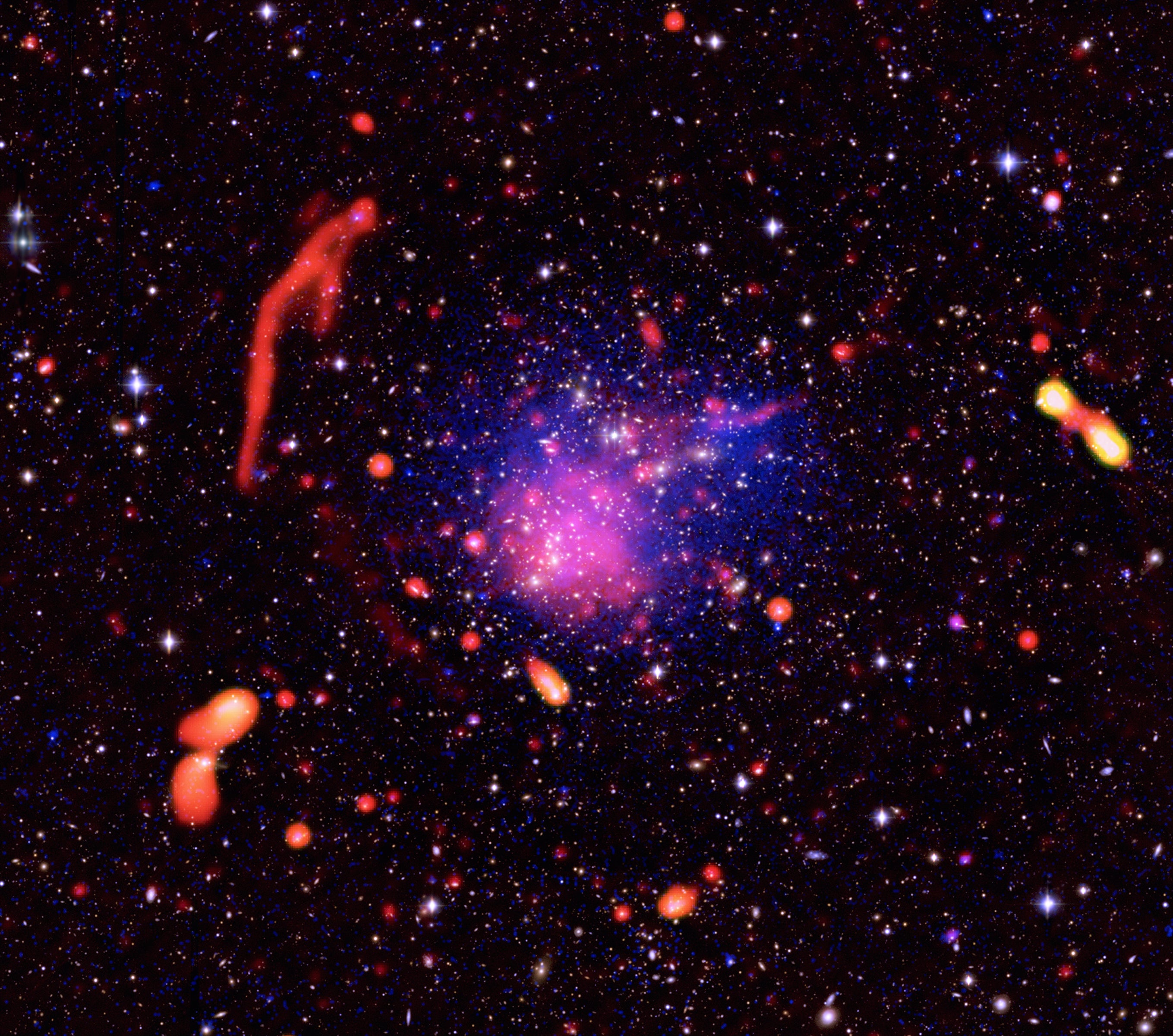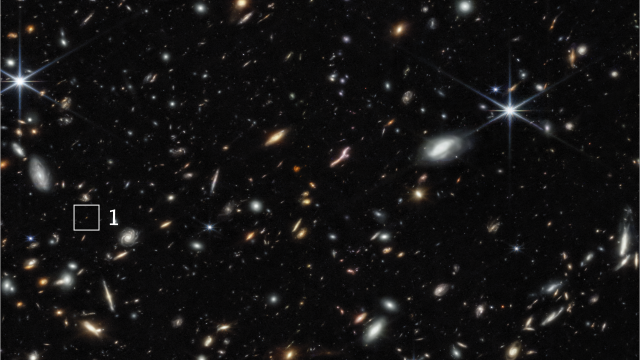In late June, the Webb Space Telescope trained its eye on two of the farthest galaxies seen to date. The galaxies existed several hundred million years after the Big Bang, making them some of the earliest light sources to emerge in the universe.
The galaxies are seen on the outskirts of Abell 2744, a giant galaxy cluster (in fact, a hodge-podge of four smaller clusters) in the constellation Sculptor. One of the galaxies existed 450 million years after the Big Bang, the moment that the universe came into being; the other is seen just 350 million years after.
The galaxies’ distances correspond to redshifts of approximately 10.5 and 12.5. Because the universe is expanding, light gets stretched out to longer, redder wavelengths as it travels through space. So an object with a greater redshift is farther away and more ancient than something with a smaller redshift. They’re similar in age to Maisie’s Galaxy, a distant object seen in a Webb deep field at a redshift of 11.8.
The universe is about 13.8 billion years old, and the first stars didn’t appear for several hundred million years. That makes these galaxies some of the earliest known light sources in the universe (excluding the cosmic microwave background, the Big Bang’s afterglow, which dates to about 380,000 years after the event).

The cluster Abell 2744 is about 3.5 billion light-years away, but the recently discovered galaxies are more ancient. In fact, they’re billions of light-years beyond Abell 2744 from our perspective — and thus their light is very faint. But the primordial light sources are gravitationally lensed by the galaxy cluster, meaning that their light is bent and magnified by the intervening object, for the viewing pleasure of the Webb telescope.
Gravitational lensing focuses distant light, making extraordinarily distant objects easier to see. Astronomers capitalise on the cosmic quirk to find the oldest known stars and even observe momentary events like supernovae — the explosive deaths of stars — multiple times, as the photons of light from the event will take multiple routes around massive objects.

Abell 2744 has been seen before — back in 2014, the Hubble Space Telescope imaged the galaxy cluster. At the time, Hubble’s deep fields were the deepest-ever observations of such an object, taken as part of NASA’s Frontier Fields project. But Webb’s sharper vision has brought more ancient light sources beyond the cluster into focus.
According to a Space Telescope Science Institute release, the two ancient galaxies are minuscule compared to our own, clocking in at just a few per cent of the Milky Way’s size. The Milky Way is about 100,000 light-years across.
Abell 2744 is nicknamed Pandora’s Cluster because of all the objects it contains. But unlike the cornucopia of ills unleashed by the figure of myth, the objects so far seen in Pandora’s Cluster are only bringing joy. The more Webb looks, the more we learn.
